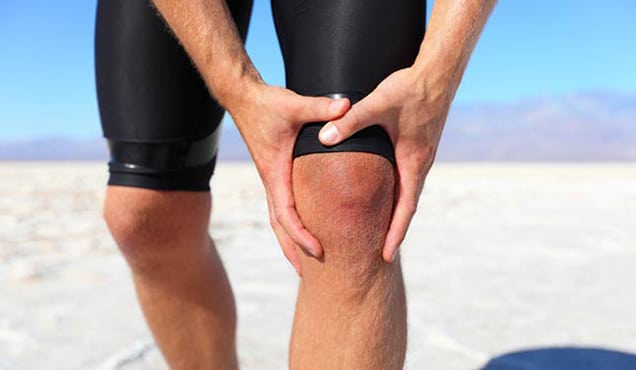
Find out which activities could put you at risk of developing stress injuries.
Stress injuries, which are also called stress fractures, are small cracks in a bone. They are usually the result of repetitive motions and overuse. Anyone can get a stress fracture, but they are most prevalent in people who have low calcium and vitamin D levels and in patients who are physically active or compete in endurance sports.
- Stress injuries most commonly develop in the weight-bearing bones in your lower leg and foot
- Those at high risk of these injuries include track runners, military recruits, and post-menopausal women.
CONTACT US TODAY
Causes
Many cases of stress injuries are the result of increasing the frequency, duration, or intensity of physical activity. When you increase your physical activity level gradually, your bones are able to adapt through remodeling. This remodeling process allows bone tissue to be reabsorbed and then rebuilt when the bones experience increased loads over time. If your bones do not have enough recovery time to reabsorb cells and replace them with new bone, you are at an increased risk of a stress injury.
Patients with foot problems also have an increased risk of stress injuries. The shape of your foot, such as flat feet or extremely high arches, puts you at risk because your feet are bearing an excessive amount of pressure with each step that you take. Wearing high-heeled shoes or old, worn-out shoes also contributes to stress injuries. If you have a medical condition that causes weak bones, such as osteoporosis, you have an increased risk of this injury. Those with eating disorders and low vitamin levels do not have the ability to replace bone cells, causing them to have weaker bones than is normal.

If you have had a stress fracture in the past, your chances of getting another one are higher than if you have never had a stress injury. Playing sports such as basketball, tennis, ballet, gymnastics, or track puts you at a higher risk because of the intense impacts that your feet and legs must absorb.
Symptoms
Soon after a stress fracture happens, you might only notice minor pain. As time passes, the pain tends to get worse. You may notice tenderness in a specific place on your foot that worsens with activity and abates when you rest. You could also notice swelling around the tender spot. If the stress fracture is in one of the bones along the top of your foot, you might notice more pain when you put your shoes on. Your pain may also worsen during a workout.
Treatments
To allow your bone to heal, you may be given a walking boot, foot and ankle brace, or crutches. If the fracture is in a place with poor blood supply, you may need surgery. Surgery may also be performed in athletes who need a rapid return to activity. The recovery time for surgery is three to six weeks. You may also need physical therapy to return to activity.
